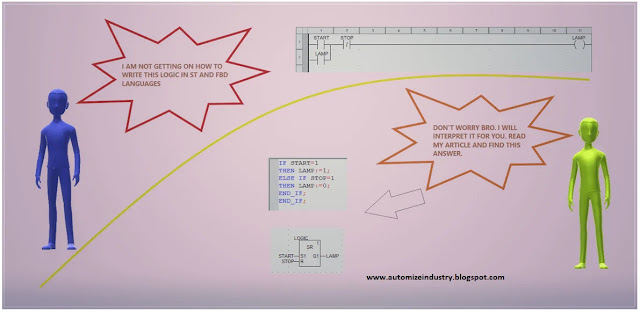How to Select a VFD for a Motor
27 June. 2022.
In this post, we will see how to select a VFD for a motor.
You are working on an electrical motor project and you will many a times require a VFD for that. A VFD (variable frequency drive) is an electronic device which varies the speed and torque of the motor according to your requirement. Many a times, we get confused as what is the right VFD that needs to be chosen for an application. Because, there are many factors involved and ignoring even any one of them will surely cause a hurdle in the performance. You have set your machine mechanically and electrically; but if you have chosen a wrong VFD for the same, then the design is of no use. So, it is important to select the right VFD for the application and for that, it is necessary to understand the various criteria involved in it. Let us have a look at the factors involved in selecting a VFD.
Horsepower (HP rating):
One of the main parameters of a motor is horsepower rating. It is a measure of power; means the rate at which VFD will do it’s work. It is equivalent to lifting a weight of 75kg to 1 meter in 1 second. More the horsepower, more will be the motor able to drive a heavier load. So, if the HP rating of your motor is 35HP, then the VFD rating should be higher than motor. Even if you are selecting a very high HP rating VFD in front of a small HP rating motor, it will not damage the motor. This concept is called oversizing, where the VFD rating is too higher than motor rating. But selecting a VFD rating smaller than the motor rating will damage the motor in long term running condition.
Full Load Amperes (FLA):
It indicates the maximum current that a motor will draw when it is running at rated voltage, load and speed. This is an important parameter that can be used to determine the power requirements of the motor. The FLA rating of VFD must be higher than that of the motor, to enable it to run if the motor draws a certain higher amount of current. This current must not exceed the current rating of VFD.
Environment:
The VFD is a very important device in a control panel. Because of the load that it is handling, the nearby environment condition of the VFD also matters. So, it is important to check conditions like the ambient temperature, cooling air supply, and also check if there is any presence of gas, dust, moisture. Accordingly, read the environmental specifications of the VFD before selecting the appropriate one. As you know, of all these, one of the most important parameter is operating temperature. As the VFD is enclosed in a control panel and the amount of heat that it generates during running condition, the VFD starts to overheat after a certain period of time, if not cooled properly. So, always check the operating temperature of the VFD by understanding the maximum temperature that the VFD will undergo during full running condition in your control panel.
Torque requirements:
A motor has two types of torque requirements – constant and variable. Constant torque motors will provide a steady torque to the load in it’s whole voltage cycle from zero to full; like a conveyor, machine controller, punch presses and extruders. Variable torque motors will provide a variable torque depending on the load requirements; like a fan or pump. If the fan speed increases, then the torque too increases to provide more air output to the consumer. So, choose the VFD according to your torque requirements. It should cater with the needs of the motor.
Voltage and Phase Supply:
It is important to know the voltage supply and phase supply of the motor required to operate it. Different countries have their standard operating voltage and phase which will be supplied to the consumer. So, it is important to match the VFD ratings with the motor ratings.
Control Method:
A VFD is normally controlled by a PLC, by means of run command and speed reference. Many types of control methods are available, like hardwire, Modbus communication, Ethernet communication, potentiometer, display unit programming, and selector switch speed selection. So, depending upon what you have to control the VFD run command and speed, you need to choose the VFD accordingly.
Enclosure Requirements:
The enclosure is designed to
protect the motor housing against any damage. It can be liquid spill,
mechanical damage, abrasion, solid spill etc. There are more than 20 types of
enclosures generally used in motor enclosures. Drive ratings come in various
enclosure specifications, according to NEMA ratings, IP (ingress protection)
ratings and UL-type ratings. So, it is necessary to choose the corresponding
VFD properly according to the enclosure that it will be enclosed in.
In general, it is recommended to
study all the specifications of the motor and VFD before choosing the
appropriate one.
I have covered the general example of VFD selection. I have
also not attempted to cover every theory of these testing deeply; you can learn
it easily once you get familiar with them. I have just given you an insight of
these types of controls. Once you are done with these, I am hopeful you will be
easily able to understand any testing properly. Learn the basics and explore a
new type of study in this type of automation. It will take some practice and as
you go on selecting the VFD’s, you will become more familiar with it.
Thank you guys; I hope you enjoyed reading the practices normally used for this type of study in industrial automation.




Thank you for sharing, I have really learnt alot from this piece .
ReplyDeleteThanks.
ReplyDeleteThank you Author for sharing this easy n amazing blog helped me lot ...!! Keep posting ..!!!
ReplyDelete